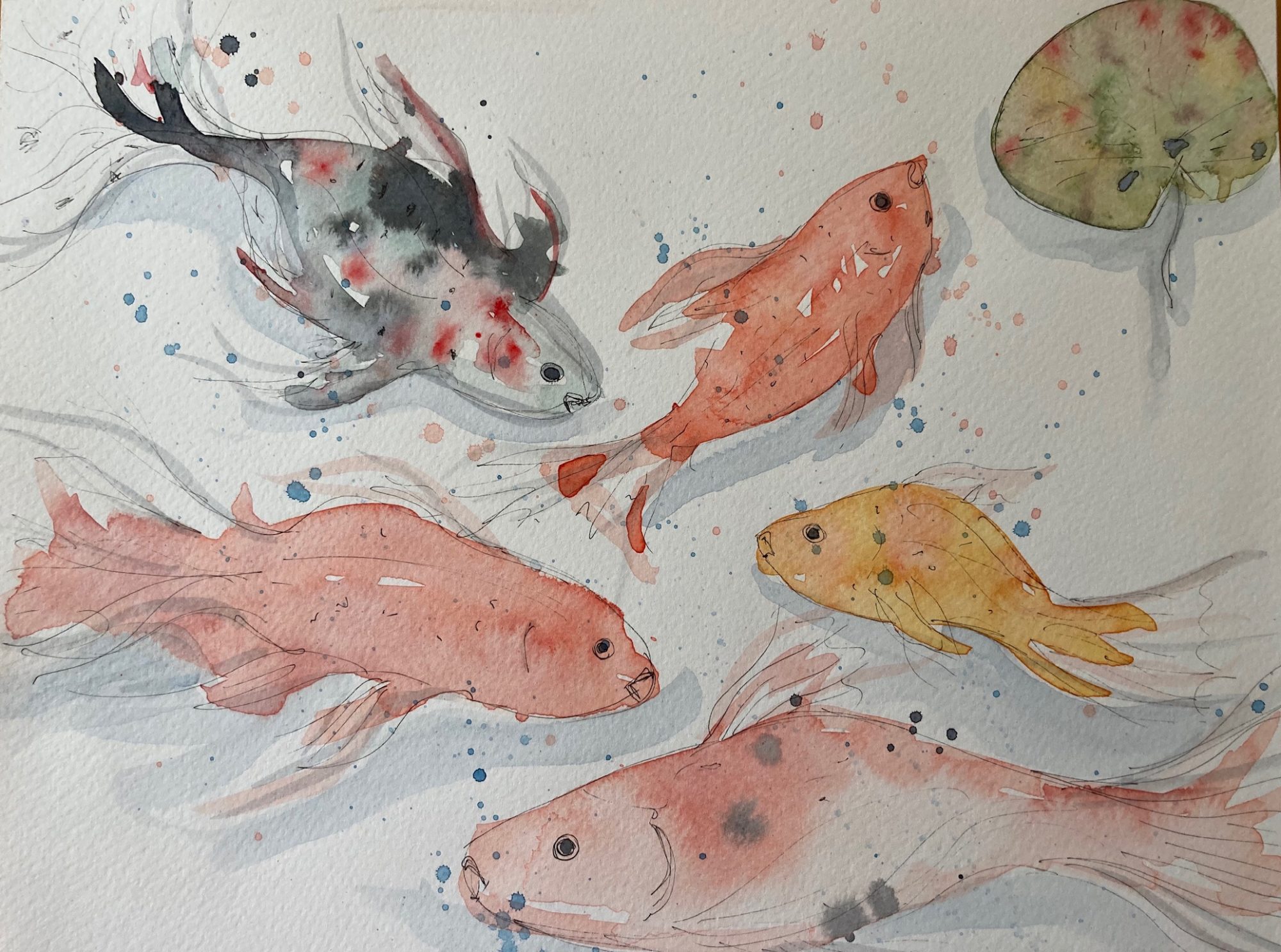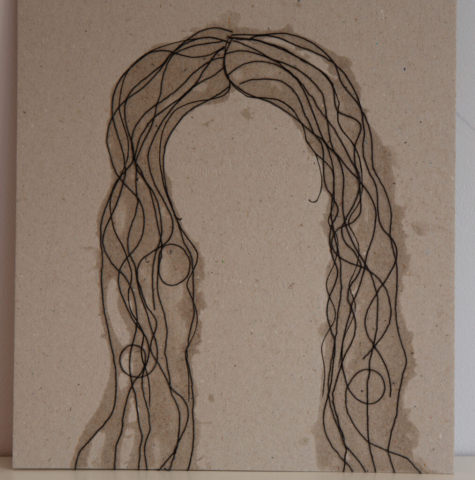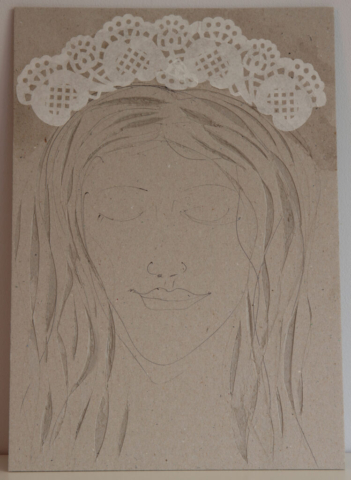Following further discussion on developing my artwork in my recent tutorial on 15th April, I have decided to experiment collograph printing to see if it might be another dimension to add to my artwork.
There are so many instructional videos on You Tube and I found an inspiring one by Mael Matthews, (a senior art educator for TES), https://www.youtube.com/watch?v=Mc-ybzxIbEU. I created some A5 print plates from found items at home – aluminium foil, string and brown paper, and was fairly satisfied with the outcome, although I did think it looked quite simplistic. It was difficult to know how deep to carve into the grey board, and how much layering to build up onto the plate. The PVA glue I used was very watery, and the string and foil didn’t completely adhere to the greyboard I’d bought. I had to re-coat those sections with more glue, which became very hard when dry.
I arranged to see our Fine Art technician, Kev and met for a detailed discussion about what I wanted to achieve. He gave me helpful advice and showed me examples of abstract collograph prints and print plates. We discussed how to build up a collograph print plate, what works and what doesn’t. (The string detail from my test plate I made from the video is too hard, and it will tear the paper when printed, so I can’t use this plate in the intaglio press. Another issue is not being able to print onto my actual map background layer paper, which is hand painted, first with gesso, then with a blended wash of watercolour. I can’t print directly onto this as the paper needs to be soaked in water and has to be completely damp prior to printing. Soaking the paper would wash away my watercolour layer, which is an integral part of my map.
We discussed the possibility of creating smaller plates onto cartridge paper which could be collaged onto the map. I suggested wet-strength tissue paper, but this would also tear. The colour of the print ink will need to be fairly pale or mid-tone – I’m concerned as many collograph prints I’ve researched appear to be quite ink-heavy – does there need to be that much ink in the plate to get a good print? Test printing this will be the only way to find out. Following Kev’s knowledgeable advice I made three further print plates, using egg shells, soft thread from bandages, paper doilies, dried herbs, found paper and pressed ferns. These need to be coated with 3 layers of shellac to seal the plates, (some of the detail might lift off in the process). Kev will prepare the plates with shellac layers, and when they are fully dried I will book to use the intaglio press with his supervision next week and see how they print out. Will the egg shell become further crushed? Too small? Will the detail I added register on the prints? It will be interesting to see the outcomes of my prints next week and what works well. Perhaps I can incorporate a successful print into my final artwork ….



